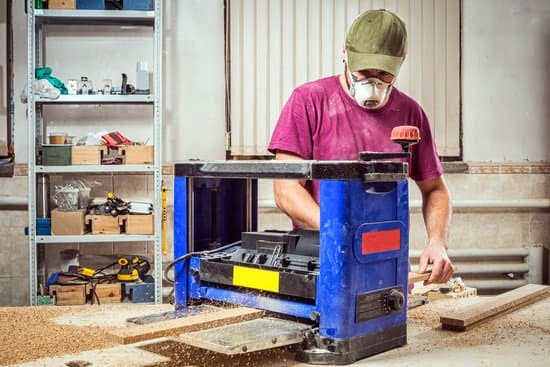Woodworking projects can be a delightful and rewarding pursuit, allowing individuals to craft unique and functional pieces. However, every woodworker knows that the key to a successful project lies in using good quality wood. The choice of wood can significantly impact the final outcome, determining the durability, aesthetics, and overall satisfaction with the project. In this article, we will delve into the importance of using good wood for woodworking projects and explore various options for obtaining high-quality materials.
When it comes to woodworking, the quality of wood used plays a crucial role in determining the success or failure of a project. Good quality wood not only enhances the durability and strength of the finished piece but also adds to its visual appeal. On the other hand, using subpar or inferior quality wood can lead to disappointing results such as warped or weakened structures, unsightly finishes, or even premature deterioration.
Understanding different types of wood is essential when embarking on woodworking projects. Each type of wood possesses its own unique characteristics, strengths, and weaknesses that make it suitable for specific purposes. By having a knowledge of various wood species and their attributes, woodworkers can make informed decisions when selecting materials that best meet their project requirements.
For those seeking good quality wood for their woodworking projects, there are several avenues to explore. Local lumberyards have long been considered havens for high-quality woods. These establishments offer a wide selection of premium-grade timber choices accompanied by knowledgeable staff who can offer guidance based on specific project needs. Additionally, with advances in technology and e-commerce platforms, online suppliers provide convenience and accessibility while offering an extensive range of top-notch wood options.
Understanding the Different Types of Wood for Woodworking
Woodworking is a craft that relies heavily on the quality and characteristics of the wood being used. Each type of wood possesses unique qualities that can greatly impact the final outcome of a woodworking project. Understanding the different types of wood available for woodworking is crucial in selecting the most suitable material for your project.
Overview of Wood Types
There are numerous types of wood commonly used in woodworking projects, each with its own set of characteristics, strengths, and weaknesses. Some popular types include hardwoods such as oak, cherry, walnut, and maple, which are known for their durability and aesthetic appeal. Softwoods like pine and cedar tend to be more affordable and easier to work with but may not possess the same level of strength or resistance to wear and tear.
Choosing the Right Wood Type
When selecting a wood type for your woodworking project, it’s important to consider factors such as the intended use of the final product, desired aesthetics, budget, and availability. Hardwoods are often favored for furniture-making due to their durability and beauty, while softwoods may be ideal for interior construction projects or smaller crafts. It’s also essential to consider how different woods respond to finishing techniques, such as staining or painting.
Consideration should also be given to sustainability when choosing wood. It is advisable to opt for certified sustainable wood sources or reclaimed/salvaged wood whenever possible to minimize environmental impact.
Identifying Wood Characteristics
To make an informed decision about which type of wood will best suit your woodworking needs, it’s important to familiarize yourself with some key characteristics. These include density (which affects its hardness), grain pattern (such as straight grain or prominent figure), stability (to avoid warping or splitting), and moisture content (which impacts dimensional stability).
By understanding these different types of wood for woodworking projects, their unique characteristics, strengths, weaknesses, and suitability, woodworkers can make more informed decisions when selecting the best material for their projects. This knowledge not only ensures better results but also helps in creating pieces that will stand the test of time.
Local Lumberyards
When it comes to woodworking projects, using good quality wood is crucial for achieving successful and satisfying results. The choice of wood can significantly impact the overall outcome of a project, including its durability, appearance, and ease of working with. That is why it is essential to know where to find high-quality wood that meets your project’s specific requirements. One excellent source of good wood is local lumberyards.
Local lumberyards serve as prime destinations for woodworking enthusiasts seeking top-notch materials. One significant advantage of purchasing wood from these establishments is the higher quality selection they offer compared to big-box stores or general suppliers. Lumberyards typically carry a wide range of species and cuts, allowing you to find the perfect wood type that suits your project’s needs. Moreover, their focus on catering to woodworking professionals ensures that these establishments prioritize quality over quantity.
Besides providing access to a superior selection of wood, local lumberyards often employ knowledgeable staff who can offer invaluable advice and guidance in choosing the right materials. These experts understand the characteristics, strengths, and weaknesses of different wood types and can help you make informed decisions based on your specific project requirements. Their expertise can save you time, money, and frustration by ensuring that you select high-quality wood that will result in more successful woodworking projects.
Finding reputable and reliable lumberyards in your area is key to accessing good quality wood consistently. Start by asking experienced local woodworkers or fellow woodworking enthusiasts for recommendations. They will have valuable insights into which lumberyards have a solid reputation for providing excellent materials and reliable service. Additionally, online resources such as reviews and forums can provide useful information about the quality and reliability of different lumberyards in your vicinity.
Online Wood Suppliers
The internet has revolutionized the way we shop for various products, and wood is no exception. Online wood suppliers have gained significant popularity in recent years due to their convenience, wide selection, and competitive prices. With just a few clicks, woodworkers can now access a vast range of high-quality wood species and cuts from around the world. This section will explore the benefits of purchasing wood online and provide tips for ensuring quality and customer satisfaction.
One of the key advantages of buying wood online is the sheer variety available. Online suppliers often offer an extensive selection of wood species that may be hard to find locally. From exotic hardwoods to specialty cuts and finishes, there are endless possibilities for creating truly unique woodworking projects. In addition, online suppliers typically provide detailed product descriptions, including information on characteristics, grades, and sustainability certifications.
To ensure a successful purchase from an online wood supplier, it is essential to do thorough research beforehand. Start by looking for reputable suppliers with positive customer reviews and reliable shipping policies. It is also advisable to check if they offer samples or small quantities for testing before making larger orders. Additionally, pay close attention to any return or refund policies in case the received wood does not meet your expectations.
| Supplier | Specialties | Customer Reviews | Shipping Policies |
|---|---|---|---|
| Company A | Exotic hardwoods | 4.5/5 stars | Free shipping on orders over $100 |
| Company B | Live edge slabs | 4/5 stars | Flat-rate shipping (varying by location) |
| Company C | Sustainably sourced lumber | 4.8/5 stars | Free shipping on all orders |
The rise of online wood suppliers has opened up a world of possibilities for woodworkers, providing access to quality wood that may not be available locally. However, it is important to exercise caution and ensure that you are purchasing from reputable sources. By conducting thorough research and understanding the supplier’s policies, woodworkers can confidently embark on their woodworking projects with high-quality materials sourced conveniently online.
Salvaging and Repurposing Wood for Environmental and Economical Benefits
Woodworking projects don’t have to rely solely on new, store-bought wood. Salvaging and repurposing wood not only brings unique character to your projects but also offers environmental and economical benefits. By giving discarded or unused wood a second life, you can reduce waste, minimize deforestation, and save money. Here are some ideas and tips on where to find salvaged wood for your woodworking projects.
1. Old Furniture:
One of the easiest ways to find salvaged wood is by repurposing old furniture. Check out thrift stores, yard sales, or online platforms like Craigslist or Facebook Marketplace for inexpensive wooden items that are ripe for upcycling. Dressers, tables, cabinets – these could all provide a wealth of usable wood once properly deconstructed.
2. Construction Sites:
Construction sites are treasure troves for salvaged wood, particularly if there’s been demolition work involved. Be sure to ask permission before taking any materials and remember to prioritize safety. Look for discarded beams, joists, or pallets that can be transformed into stunning pieces for your workshop.
3. Online Platforms:
In recent years, many online platforms dedicated to salvage materials have emerged. Websites such as Freecycle or local online forums often have people giving away or selling unwanted wood from various sources – remodels, renovations, or even fallen trees in their yards. Keep an eye out for these opportunities as they might lead you to hidden gems.
Before working with salvaged wood, it’s crucial to properly prepare it for use in woodworking projects. Start by inspecting the wood for any signs of rotting or pests that could compromise its integrity. Remove any nails, staples, or screws embedded in the material and sand it down to remove dirt, paint or varnish residues.
Salvaging and repurposing wood not only contributes positively to the environment but also adds a unique touch to your woodworking projects. Look beyond traditional sources and get creative with salvaged wood – you may find that a piece of discarded material can become the centerpiece of your next masterpiece.
Specialty Wood Stores
When it comes to woodworking, sometimes a project calls for something a little different. Whether you’re looking for a rare wood species or a unique cut, specialty wood stores are the perfect place to find exactly what you need. These stores cater to specific woodworking needs and offer a wide array of options that are sure to inspire and elevate your projects.
One of the main benefits of shopping at specialty wood stores is the access to unique wood species. These stores often carry woods that may not be easily found in local lumberyards or online suppliers. From exotic hardwoods like purpleheart and cocobolo to reclaimed barn wood with character and history, specialty wood stores can provide materials that make your projects truly stand out.
Not only do these stores offer unique options, they also often have a large selection of different cuts. Whether you’re looking for quarter sawn oak for an antique-inspired piece or live edge slabs for a rustic dining table, specialty wood stores can provide the perfect cut to fit your vision. Their extensive inventory allows you to choose the exact grain patterns, textures, and sizes required for your project.
If you’re wondering where to find these specialty wood stores, there are a few places you can start your search. Local woodworking associations or guilds can be great resources as they often have members who know about or even own specialty wood stores. Woodworking magazines and online forums may also have recommendations from fellow enthusiasts who have experience in sourcing unique materials.
Community Woodworking Shops
Community woodworking shops are invaluable spaces for both experienced woodworkers and beginners alike. These shared workshops provide access to high-quality wood and serve as a hub for knowledge exchange among woodworking enthusiasts. Whether you’re looking for a specific type of wood or seeking advice on your project, community woodworking shops can be an excellent resource.
One advantage of community woodworking shops is the wealth of knowledge found within their walls. These spaces often attract seasoned woodworkers who are generous with their expertise and eager to share their skills with others. When visiting a community woodworking shop, you’ll likely find individuals who can offer guidance on selecting the right type of wood for your project, suggest specific techniques to achieve certain finishes, or even provide help troubleshooting issues that may arise during the woodworking process.
In addition to the wealth of knowledge, community woodworking shops may also offer a variety of high-quality wood options. Many community shops have partnerships with lumber suppliers or local sawmills, ensuring access to top-notch wood selections. Some larger community workshops may even maintain their own stock of quality timber, available for members to purchase at reasonable prices.
When visiting a community woodworking shop, it’s important to follow any guidelines or rules they have in place regarding the use and purchase of their wood supplies. Each shop may have its own policies on pricing, how much wood can be purchased at once, and restrictions on certain types of wood due to limited availability or sustainability concerns. Respecting these rules not only ensures fair use but also helps maintain the resources for all members of the community shop.
Overall, community woodworking shops provide more than just a space to work on projects-they act as valuable hubs for knowledge sharing and quality wood supply. These spaces foster a sense of camaraderie among like-minded individuals and often become places where lifelong friendships are formed. If you’re interested in enhancing your woodworking journey while gaining access to quality wood resources, consider joining a community woodworking shop in your area.
Building Relationships with Local Woodworkers for a Supply Network
Finding and maintaining a reliable source of quality wood is essential for any woodworker. While local lumberyards and online suppliers can provide a wide variety of wood options, building relationships with local woodworkers can offer another valuable resource for obtaining high-quality wood. These connections can not only provide access to unique and specialty woods but also offer the opportunity to learn from experienced craftsmen and expand your knowledge in the field.
Steps to Develop Relationships
Developing relationships with local woodworkers requires effort and genuine interest in the craft. Here are some steps you can take to build connections within the woodworking community:
- Attend Woodworking Workshops and classes: Participating in workshops or taking classes at local woodworking schools provides an excellent opportunity to interact with other woodworking enthusiasts, professionals, and instructors. Engage in conversations, show your eagerness to learn from others, and ask questions about their experiences working with different types of woods.
- Join Woodworking Associations or Groups: Joining local woodworking associations or groups allows you to meet like-minded individuals who share your passion for woodworking. Take part in meetings, events, or forums where you can connect with experienced members who may be willing to share their insights on sourcing good quality wood.
Benefits of Establishing a Network
Establishing a network of reliable wood supplies through relationships with local woodworkers offers several advantages:
- Access to Specialty Woods: Local woodworkers often have access to unique or hard-to-find woods that are not available in commercial stores. By developing connections with them, you can gain access to these specialty woods for your projects, allowing you to create one-of-a-kind pieces.
- Insider Knowledge: Experienced woodworkers possess valuable knowledge about various types of wood, including their characteristics, sources, and best applications. They can provide recommendations on which types of wood would work best for specific projects and share insights on proper wood selection and preparation.
- Shared Resources: Woodworkers often have surplus materials from their projects or know of other woodworkers who do. By being part of a local woodworking network, you can tap into these shared resources, potentially acquiring high-quality wood at a lower cost or even for free.
Tips for Fostering Meaningful Connections
To ensure successful relationships with local woodworkers, consider the following tips:
- Be Respectful and Appreciative: Show respect for their expertise and experience by valuing their time, knowledge, and advice. Express gratitude for any assistance they offer and acknowledge their contribution to your growth as a woodworker.
- Share Your Own Expertise: While you may not be as experienced as some local woodworkers, don’t underestimate the value you can bring to the table. Share your own knowledge, skills, or ideas with others in the woodworking community. By contributing your unique perspective, you can foster mutual respect and create meaningful connections with fellow craftsmen.
- Collaborate on Projects: Collaborating on projects can help strengthen relationships with local woodworkers while expanding your skill set. Working together allows you to exchange ideas, techniques, and resources while building trust and camaraderie within the woodworking community.
By investing time in building relationships with local woodworkers, not only do you gain access to quality wood sources but also become part of a supportive network that encourages growth and learning in the craft of woodworking.
Conclusion
In conclusion, choosing the right wood for your woodworking projects is crucial for achieving successful outcomes. The quality of wood used can greatly impact the overall appearance, durability, and functionality of the finished piece. By understanding the different types of wood available and their unique characteristics, you can make an informed decision when selecting the most suitable wood for your specific project requirements.
Local lumberyards are excellent sources of high-quality wood. They offer a wide selection of wood species and have knowledgeable staff who can assist you in finding the perfect material for your project.
When searching for reputable lumberyards in your area, consider factors such as their reputation, customer reviews, and the variety of wood they offer. Investing time in finding a reliable local lumberyard will pay off in the long run by ensuring that you consistently have access to good quality wood.
Additionally, online wood suppliers provide a convenient option for purchasing high-quality wood from anywhere in the world. However, it is important to exercise caution when buying online to ensure you receive exactly what you need. Look for reputable online suppliers with positive customer feedback and clear product descriptions. Ask questions about shipping methods and return policies to avoid any disappointments or misunderstandings.
Furthermore, salvaging and repurposing wood not only has environmental benefits but can also add unique character to your woodworking projects. Consider sources such as old furniture, construction sites, or online platforms where salvaged wood may be available at little to no cost. Take time to properly prepare salvaged wood by removing nails or screws and addressing any potential issues such as rot or insect damage before using it in your projects.
Lastly, building relationships with local woodworkers can be invaluable for establishing a reliable supply network of good quality wood. Attend woodworking classes or workshops where you can meet experienced craftsmen who may have access to unique or specialty woods. By fostering meaningful connections with these individuals, you not only gain access to quality materials but also tap into their expertise and knowledge.
Frequently Asked Questions
What is the most recommended wood to use for woodworking?
The most recommended wood for woodworking is typically considered to be hardwoods like oak, maple, or cherry. These woods are prized for their strength, durability, and versatility. Oak is particularly popular due to its beautiful grain patterns and overall sturdiness.
Maple is known for its light color and smooth finish, making it a great choice for furniture projects. Cherry, on the other hand, offers a warm reddish-brown hue that develops a rich patina over time.
How do you get wood for a project?
There are several ways to acquire wood for a project. One common method is to purchase lumber from a local sawmill or home improvement store. These establishments often offer a wide variety of wood species in various sizes and can cut it to your desired dimensions.
Another option is salvaging wood from old furniture or buildings, which can add character and history to your project. Additionally, you may consider joining woodworking clubs or online communities where members exchange or sell surplus wood.
What wood is best for DIY projects?
When it comes to DIY projects, the best wood will depend on the specific nature of the project itself. However, softwoods like pine or cedar are often favored for their affordability, ease of use, and availability in large quantities. Pine is particularly versatile and widely used in construction projects due to its light color, workability with tools, and low cost.
Cedar is well-regarded for its natural resistance to decay and insects, making it an excellent choice for outdoor projects like decks or garden furniture where durability is crucial. Ultimately, it’s essential to consider the intended purpose of the DIY project when selecting the most suitable wood type

Hi everyone! I’m a woodworker and blogger, and this is my woodworking blog. In my blog, I share tips and tricks for woodworkers of all skill levels, as well as project ideas that you can try yourself.





